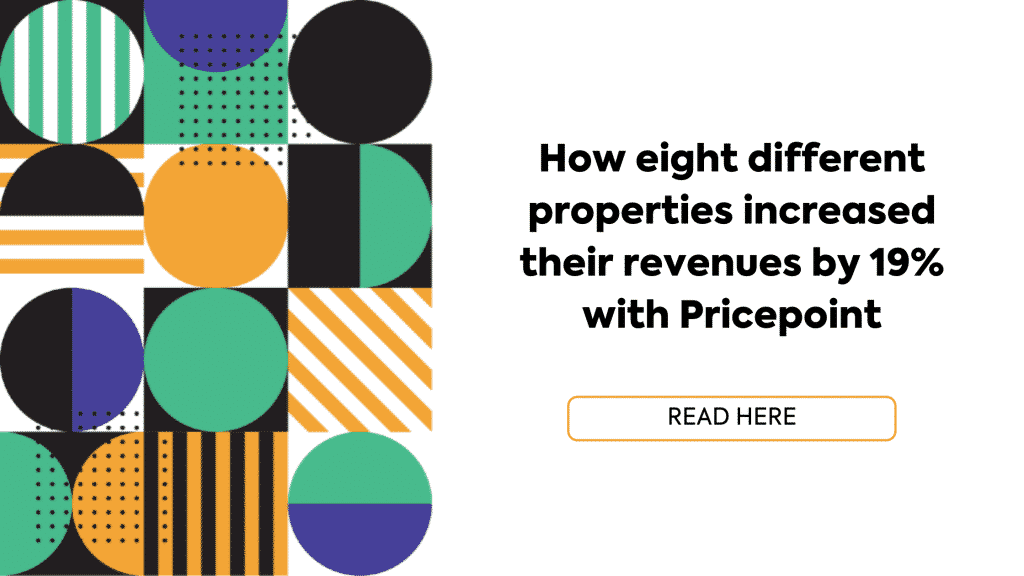You have a revenue and marketing strategy in place at the hotel – that’s great! But how do you measure its success? With Key Performance Indicators (KPI in short), of course. One of the most commonly used KPIs in the hotel industry is revenue per available room, or in short, RevPAR.
Let’s dive into why it’s important and how to calculate RevPAR. After all, if you want to move forward, first, you need to know what’s going on in your hotel.
What is RevPAR, and why it’s important
Revenue per available room gives you a peek at how many bedrooms a hotel sells and how much revenue it makes from each booking.
Without a doubt, the amount of revenue is a vital aspect of every business on the planet. Without the money, there’s no business. That’s why RevPAR is important – because it lets you measure the amount of revenue you get from every room.
Besides, using the RevPAR metric helps you find the right price point to draw maximum revenue over a certain period per available room.
Therefore if you’re not satisfied with the results – you seek ways to improve.
The other KPIs that directly influence the RevPAR metric are ADR (average daily rate) and occupancy rate.
How to calculate RevPAR in hotels?
Hotel managers can use the following formulas for calculating RevPAR:
RevPAR = multiply average daily rate (ADR) by occupancy rate.
Or
RevPAR= divide the total number of rooms available by total revenue from the month.
Example: There’s a 150-rooms hotel, with an average daily rate of $100. It has an average daily occupancy of 80%; therefore, its RevPAR is $80 a day.
When you want to estimate the monthly RevPAR, multiply daily RevPAR by the number of days.
What’s the difference then between RevPAR and ADR? Read here.
Remember that the RevPAR hotel formula doesn’t consider other revenue streams, like spa, selling tours, tourist tickets, airport transfers, etc.
That means that this metric doesn’t give a complete picture of the hotel situation. As an effect, guiding your decision based only on RevPAR won’t be productive. That’s why hoteliers should accompany it with other KPIs, like GOPPAR or TrevPAR.
If you’re not a number person – don’t worry! Our revenue management system, Pricepoint, continuously calculates it for you – so you always know what’s going on.
What’s the difference between RevPAR and RevPAR index
While writing about the RevPAR formula, it’s worth mentioning the RevPAR index. I know – both sound similar, so it might be confusing that they are not the same thing. In this case, the RevPAR index indicates how well the hotel performs compared with competitors.
Note: to calculate RevPAR Index, choose the suitable competitor’s set, which offers similar services.
Calculating the index includes dividing your hotel RevPAR by the summed RevPAR of properties you compare with and multiplying the results by 100.
When the RevPAR index equals 100, it means you’re getting an expected amount of market share. The ideal hotel scenario is when the results are higher than 100 – that’s when you’re getting more of the market share.
How to increase RevPAR in your hotel
Five ways to increase revenue per available room in your hotel
- Apply different pricing strategies
- Decrease the cancelation rate
- Introduce minimum length stay
- Respond to the online reviews
- Level up your social media game
What is RevPAB – hostel key performance indicator
Now, while RevPAR works well in hotels, let’s not forget about other travel accommodations, like hostels. Nowadays, many hostels offer private rooms so they can use RevPAR too.
However, since hostels sell beds in the shared dormitories, revenue per available room might not be the most suitable metric for calculating hostel results. Don’t get discouraged! Because luckily, there’s a solution for that in revenue management.
You see, while the hostel dormitory might not be 100% occupied, the hostel still has sold, for example, ten beds out of a 12-bed dormitory. That’s why revenue per available room is not the effective KPI to use here because it won’t show an accurate picture.
In hostels, it’s more common to calculate revenue per available bed, also known as RevPAB. Although it’s not a metric covered often by revenue managers or in many online articles – in Pricepoint, we’re all about empowering hostel managers too.
That’s why we take responsibility to uncover what RevPaB is and how to calculate it in hostels.
RevPAB is the analogical metric to RevPAR but measured per bed, not per room.
What is the formula for calculating RevPaB?
Calculating revenue per available bed is similar to RevPAR. The difference is, you need to add to the number of private rooms – the number of beds.
In this case, when you calculate ADR and occupancy rate, you consider beds and not rooms. For example, in the occupancy rate, a double room counts as two beds.
At first, calculating RevPAB might be confusing.
Let’s put the frame on it by showing you the RevPAB formula:
RevPAB = ADR x Occupancy rate
RevPAB= (private rooms revenues + dormitory beds revenues / private rooms sold + dormitory beds sold) x Occupancy rate.
Conclusion
Phew, that was hard, but you made it anyway!
Using KPIs like RevPAR or RevPAB will answer your questions on how the hotel or hostel is performing and what steps you should take to improve.
Whether you should be increasing your occupancy rate or ADR or maybe work out the balance between them for the maximized revenues?
If you want to know other hospitality industry KPIs, check out Pricepoint posts about revenue management metrics.
About Pricepoint
Pricepoint helps hotels and hostels maximize revenues with an automated revenue management system. On this blog, Pricepoint shares industry knowledge about revenue management.
Try Pricepoint free and increase revenues – sign up for the demo here.
Written by Ewa Gabara, Marketing Coordinator


